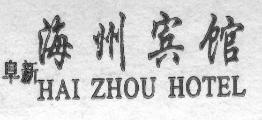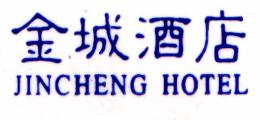| As with my previous reports, this is intended to be of particular assistance to those who may be considering travelling alone or in a small group without the aid of a full-time guide. It therefore contains more details about accommodation, travel arrangements and locations than might normally be included in a standard trip report. In a country where the language is impossible to master and English speakers are still uncommon such details and information may be vital to the success of the trip. It often builds on the reports of others who are acknowledged at the end of the report. Dahuichang Limestone Works - December 20th I was invited to spend the day with a group from Globe Steam who had travelled out on same Lufthansa flight - for which I thank Peter Patt. We first visited the Beijing Railway Museum and then headed to Dahuichang by minibus. Therefore I was not faced with the travel difficulties experienced by other recent independent visitors and can offer no advice on how best to reach this railway. On arrival at about 1.00pm I found C2 0-8-0 No.2 and 3 at the servicing point taking coal and water. After about half an hour No.2 left with a train of empties but only proceeded about 200 yards up the line, where it stopped and the wagons were loaded by excavator using large piles of limestone standing next to the line. Once loaded the train returned to the plant where the wagons were unloaded in the usual way. No.3 did the same about 45 minutes later. No service trains operated beyond this point throughout the afternoon. No 1 and 4 were both in the shed receiving maintenance. Tangshan Coal Mine - December 21st Caught Train K27 from Beijing Main Station and spent the night at a very cheap hotel (70Y) just outside the station. This was located at the far end of a block of buildings which are to the right of the station forecourt. The room was warm, bed comfortable and shower hot so nothing else was required. Because this was a closed industrial location I hired a local guide to obtain appropriate permission and gain access to the site. Only two locomotives were operational - SY 0793 and 0964. The latter locomotive has a decorated smokebox with the legend "Build For A Modern China". SY 1679 was out of use just outside of the shed - entry to the shed itself was not possible. Local employees say that there are now only four engines here and they will finish at the end of the year. Both locomotives were busy throughout the day although the passenger trains were all operated by a diesel locomotive. Left Tangshan on Train 2223 to Shenyang. Gongchangling (Anping) - December 22nd and 23rd At Shenyang Bei I was stopped by the railway police and had my luggage weighed. According to their scales it weighed 23kg which was 3kg over permitted weight and more mysteriously 4kg more than it weighed at Heathrow!! I used my usual "I have no idea what you are talking about" look and was finally waved through the ticket barrier without further charge!! From Shenyang I caught Train 1714 to Liaoyang where I met up with Mike Ma, an excellent guide recommended by John Agnew and Rob Dickinson. Previous reports of a tour group being arrested at this location led me to be cautious although I think that so long as you avoid the mine area (where little or no steam is found anyway) there is little chance of any problems arising. We took a minibus from Liaoyang to Anping and booked into the Jin Ou Hotel (175Y) about 200 yards beyond the station on the right hand side of the road. We found JS 8239 in the shed but were refused permission to take any photographs. From there we travelled up the line eventually coming across JS 8252 in one of the yards towards the top end of the system. With no steam action at all on the main line we returned to Anping station and checked out the exchange sidings. Here we found JS 8046 shunting the iron ore grading plant and shortly afterwards JS 8159 left on a train of empty wagons heading up the valley. By this time the light was low and there was no point in chasing. The following morning we went to the steam servicing point and found JS 8159, 8046 and 8245 being prepared for the day's work. About 9.30am, JS 8245 set off up the valley with two heavily loaded coal wagons. The nature of the gradients meant that JS 8046 was required to bank the train for part of the way. This gave spectacular action for several miles up the valley. We then returned to the exchange yards where we found JS 8252, which was later joined by JS 8245 and JS 8046, providing opportunities to get three JS's into one photograph. We eventually left Anping at about 2.30pm and returned by bus to Liaoyang. The intention was to catch a train from here to Jinzhou and then after an overnight stop to catch the morning train to Nanpiao. Accordingly we caught K680 and arrived about 8.30pm in Jinzhou where we stayed overnight in a hotel next to the station. Jinzhou to Fuxin – December 24th Requests for a ticket from Jinzhou to Nanpiao were met with blank looks at the ticket office. No-one seemed to be aware of the existence of Nanpiao! It was at this point that I discovered there are two cities called Jinzhou - one in Liaoning province near to Nanpiao and one near Dalian! And that due to some spectacularly bad planning I was at the wrong one!! Although it is possible to get a train from one Jinzhou to the other Jinzhou, a brief session with the railway timetable suggested that I might be best to head for Fuxin via Shenyang and visit Nanpiao a little later in the week. Therefore a day of spectacularly wonderful weather was spent gazing out of various train windows - the penalty for being so slap happy and stupid!! I arrived in Fuxin and took a taxi to the Hai Zhou Hotel (190Y). Shortly after my arrival there was a knock on my door and when I opened it there were two staff members holding cellophane wrapped and decorated fruits. These they handed over with a cheery "Merry Christmas" - a wonderful gesture from a very pleasant hotel. |
| Fuxin - December 25th and 26th Fuxin was busier than last year although it remained difficult to find trains being worked by steam locomotives. Only the passenger trains and trains returning from the power station could be more or less guaranteed. As always there was much light engine movement. There were plenty of electric trains and as previously reported it seems a lot of coal is being is being extracted from the large open cast pit. Just where it all goes remains something of a mystery as the main yard was fairly devoid of loaded wagons and the power station can only use a relatively small fraction of the total output. Although Christmas Day is not an official holiday it was very quiet and the locomotive repair shop and the main shed were therefore accessible. Inside the locomotive repair shop was SY1092 which was presumably being repaired for the Nanpiao system. SY0036 was also in the main locomotive works. In total I saw 25 different SY's plus the various dumped locomotives at the north and south stabling points. The following day was busier although working trains remained elusive. As on the previous day I walked from Taiping to Wulong and back. I saw a further three SY's not seen the previous day. My intention was to catch Train 6780 from Fuxin to Jinzhou but although this train appears in the October 2003 timetable it is not running. I therefore took a bus to Jinzhou (the correct one!) and arrived about 8.00pm. Stayed at the Jincheng Hotel (150Y) which is a 5Y taxi ride from the station. Nanpiao - December 27th to 31st Rob Dickinson has already provided a comprehensive report on Nanpiao and therefore these are only intended as additional notes and observations rather than a comprehensive report of five days at the lineside. I took Train 6762 from Jinzhou to Nanpiao and booked into the legendary Room 207 at the hotel. If like me you cannot recognise a hotel when you see one, the hotel at Hungjia has the words ˜Nan Mei Zhao Dai Shou' on the sign on its roof to help you to identify it!! There are at least three internet cafes in Nanpiao. Turn left out of the hotel and walk along the street until you come to the far end of the block of shops. Turn left again and one of them is straight ahead when you reach the end of the road. Two others are in the same street on the same side of the road. Traffic levels at Nanpiao are certainly low but the system has a unique and difficult to define charm of its own. Maybe it is the sight of trains starting from right outside the hotel's front door or the delighted response of locals to the sight of enthusiasts. Morning action was usually to be found at Zaojiatun, with a train heading up to the summit around 9.45 - 10.00 am and a morning freight headed to Sanjiazi at about the same time. Other freight workings were far less predictable. The middle of the day was often very quiet with three of the locomotives on the stabling point. The simultaneous departures in the afternoon were usually five or six minutes apart and the diesel kept making unwelcome appearances! On December 27th the 15.00 departure to Sanjiazi was a mixed train - the only occasion that I saw this happen. If you want lots of action and frequent trains go to Tiefa. If you want beautiful scenery and quality above quantity you might well fall under the spell of Nanpiao. If you want high quality hotels - go to Tiefa. If you are happy with basic comforts you will probably be happy to stay in Nanpiao. If you don't mind paying heavily for lineside permits - go to Tiefa. If you enjoy spending most of the day poking around the private mines and push railways which are to be found all over this system then head for Nanpiao. Xuanhau Steelworks - January 1st and 2nd Caught the afternoon train from Nanpiao on December 31st and then bought a soft sleeper ticket on Train 2590 from Jinzhou to Beijing. The ticket cost 234Y but I had the entire compartment to myself. On arrival in Beijing I took a taxi to Beijing Nan and caught Train 1455 to Xuanhau. I booked into the slightly expensive but upmarket Xuan Hau Hotel (216Y for a single room) and then took a taxi to the eastern plant. Mike Ma had previously contacted the Xuanhau Iron And Steel Company who told him I did not need permission to photograph the ˜running lines". I have to admit to taking the definition of ˜running lines" fairly liberally but no-one seemed to object to my presence. I met an English speaking female worker at one of the level crossings just inside the plant who was able to provide me with information about locomotive allocations and train movements. I saw all five of the locomotives allocated to the eastern plant - SY 0552, 1121, 1462,1528 and 1541. She told me that a further four locomotives were allocated to the smaller western plant. She then talked about a third plant producing raw materials for the other two plants, located about four miles to the east, which she told me also had steam operations. This could be reached by taxi or by taking the No.2 bus to its eastern terminus and then walking east for about 3 minutes until you reach a level crossing. She then offered to take me there on the back of her motorcycle! Naturally the offer was duly accepted and amazingly we arrived there in one piece. Whether this really is a separate operation or is the eastern end of the main plant was difficult to determine. It certainly seemed less than four miles but not much. Here I found SY 0356, 1104 and 1219. My ˜guide" told me there were at least six locomotives allocated to this plant. The following day I visited the western plant and found SY 0299, 0782 1113 and 1177 in action, before returning to the eastern plant for a final session. Slag dumping at the western plant is once again into a lagoon. Finally I caught Train K44 from Xuanhau back to Beijing and then spent a most enjoyable evening being entertained by Chinese friends before returning to London the following morning. Conclusions This was probably my most enjoyable solo trip around China. The weather was excellent on fourteen out of the fifteen days and, despite the unexpected visit to the wrong Jinzhou, the trip went without problems. The Chinese people were uniformally friendly and helpful and were always pleased to welcome me to their hotels, restaurants and railways. Whilst there are always risks in travelling alone there are also enormous rewards. So many of my experiences would simply not have occurred had I been a member of a group, large or small. The language is always a problem but my Berlitz phrase book was sufficient to overcome most communication difficulties and that phrase book, the English version of the Chinese railway timetable produced by Duncan Peattie and my sheaf of internet reports were my constant and invaluable travelling companions. I would particularly like to thank Peter Patt, Bernd Seiler, John Agnew and above all Rob Dickinson for all their help, advice and encouragement and also to everyone who contributes trip reports for the benefit of others. |





| ANOTHER SOLO TRIP TO CHINA DECEMBER 2003/JANUARY 2004 Dahuichang, Tangshan, Gongchangling, Fuxin, Nanpiao and Xuanhau |